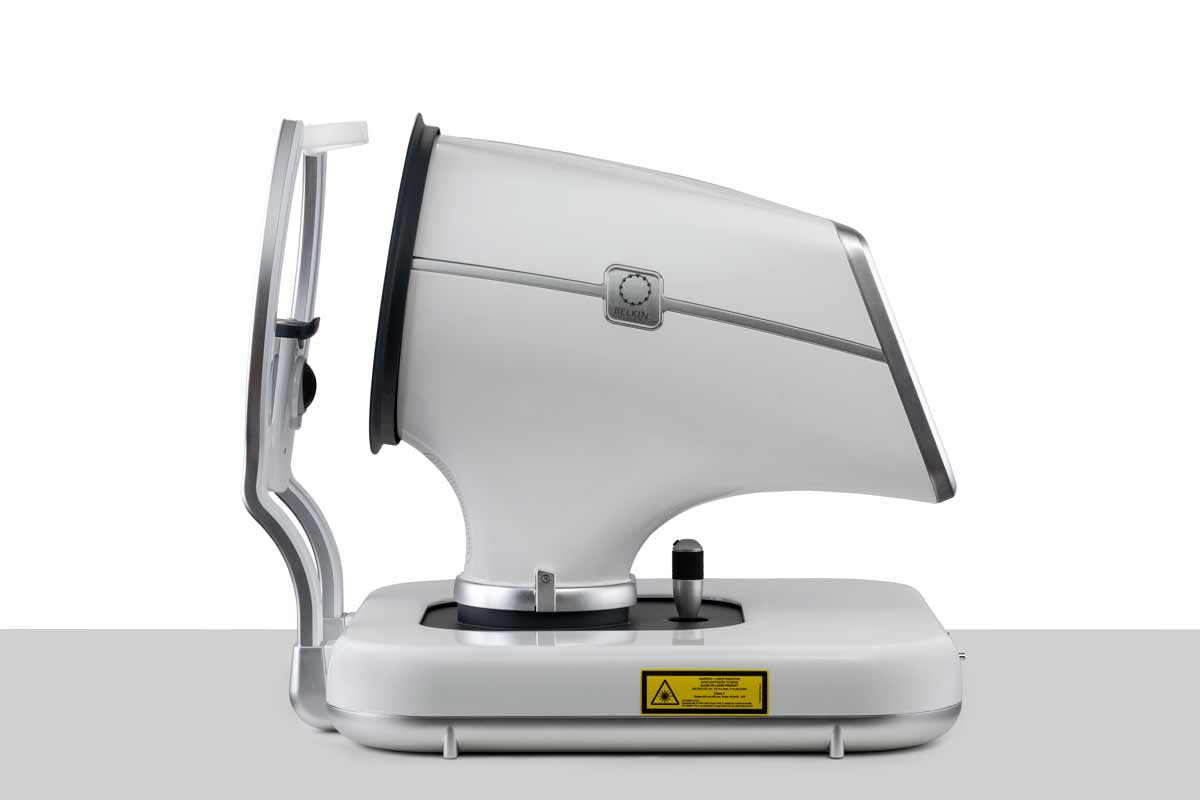With selective laser trabeculoplasty (SLT) increasingly being recognized as an effective first-line treatment for glaucoma, and more optometrists obtaining the legal rights to perform such procedures, researchers and product developers are actively searching for ways to improve the experience for patient and doctor alike. One such example, an automated device called the Eagle from Belkin Vision, was approved for use in the US yesterday by the FDA. The Eagle is a Q-switched, 532 nm-wavelength, frequency-doubled Nd:YAG laser.
 |
| The Eagle device from Belkin Vision is the first SLT laser on the market in the US to use a technique called "direct SLT." Photo: Belkin Vision. Click image to enlarge. |
Unique to the Eagle is a technique called “direct SLT.” While traditional SLT lasers send pulses to the trabecular meshwork via a gonio lens, direct SLT allows laser energy to be applied directly through the peripheral cornea and the limbus, eliminating the need for gonioscopy.
The automation component of the device has several advantages; for one, the laser will automatically apply 120 laser pulses at the single push of a button, according to Belkin. An iris tracking capability ensures that the laser is aligned precisely on the limbus before it fires, the company states. This feature also allows the device to detect and stop firing if a patient moves.
A recent clinical trial showed a 15% to 30% IOP reduction, depending on energy level used, for patients with open-angle glaucoma treated with direct SLT.1
For more information, visit belkin-vision.com.
1. Goldenfeld M, Belkin M, Dobkin-Bekman M, et al. Automated direct selective laser trabeculoplasty: first prospective clinical trial. Transl Vis Sci Technol. 2021;10(3):5. |

